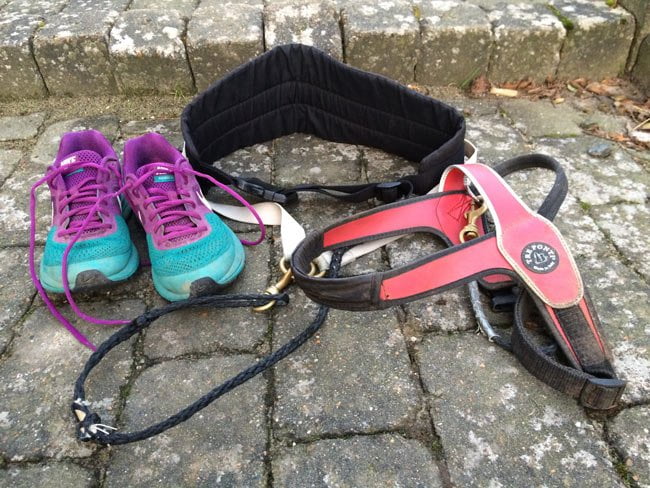We all know that our dogs need exercise.
We also all know very well that we ourselves need exercise!
Dog owners walk (not surprisingly) significantly more than people who do not have a dog. And in fact, there are studies that show that dog owners generally have a higher level of activity. I would like to exercise a lot myself – also in addition to the walks, but I actually think it can be difficult to find time for it all. So I try to combine things.
For the dog is an excellent running companion.
Yes yes, it just has to learn the rules of the run. But once it’s in place, you have a faithful partner who will never burn you out.
GET STARTED
First of all, you need to consider whether your dog is suitable for longer runs. A chihuahua may not be the right dog as your running mate at a 10 mile mark!
I even have both a labrador and a cavalier king charles. The little cavalier came into the family first, so I tried to take her on some short runs. I simply had to give it up, because she was (and still is) not a dog that runs a lot. She just wants to take it easy and sniff, sniff and sniff again.
But then we got a labrador. She was barely a year old before I started taking her. One has to take care of them in adulthood and long hard runs are not good for them. Let them be fully or almost fully grown before the running training starts. (If necessary, ask your veterinarian when your puppy is ready to start running training).
I started out with short trips. In fact, my luck was that I even started from scratch. So we took turns walking and running 2-3 kilometers in the beginning. And then we built on over time.
Remember to take good care of your dog. Most dogs do not say no even though they are tired. It is your job to read your dog and make sure to train him up to the desired distance.
DECIDE FOR THE RULES OF THE GAME
It is an advantage from the start to decide which rules your dog must abide by on the run.
Your dog learns them much easier if it is the same rules of the game every time.
For my own part, my labrador must not sniff on the run. If she has to pee or worry, then of course we stop. Everything else is forbidden! But I’m also lucky with my labrador. In part, she is a bitch and does not need to pee on every single blade of grass, like many male dogs. And partly she LOVES to run and she is very focused. She does not want to greet anyone, nor is she interested in sniffing. We’re just moving forward!
Another rule is that she should run in front of me. I bought a special treadmill that her line sits in. When she runs in front of me, I can keep an eye on her all the time and I avoid the line getting slack so I risk falling into it. In addition, I avoid her pulling me skewed forward so I get knee pain or other injuries.
ON THE DOG TERMS
So run at the right time in terms of weather and wind.

HOLD ON TO THE ROUTINE
It makes demands on me. We have to be consistent with our races.
I do not think I can afford to run 8km with her one day, and then wait 3 weeks for the next run. If we are to run, we must be consistent and she must keep in good stable shape. Therefore, we also run at uniform intervals between trips and without large fluctuations between the length of trips.
The dog is a great running companion. It will with EVERY time and you commit to being stable with your run.
HOME AGAIN AFTER THE TRIP
# 6 GOOD TIPS FOR YOU WHO WANT TO MAKE YOUR DOG A RUNNING PARTNER
- Start calmly and train together
- Put your dog in focus – your own goals are secondary
- Be stable with the runs
- Offer fresh water immediately after the run
- Cool the warm muscles slowly
- Take good care of the dog’s paws on the run, and take good care of them when you get home


